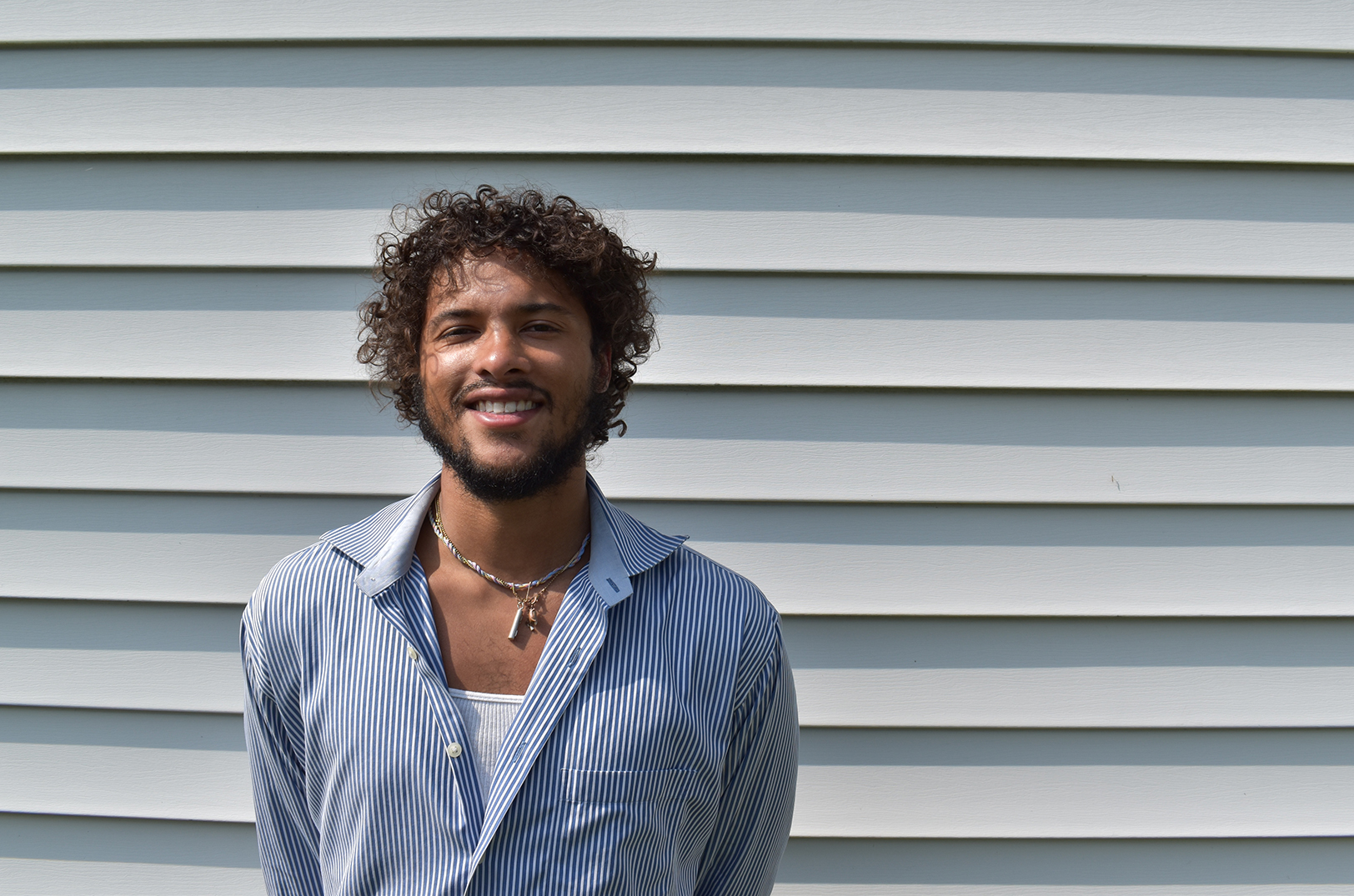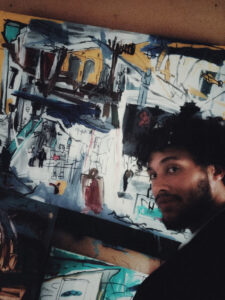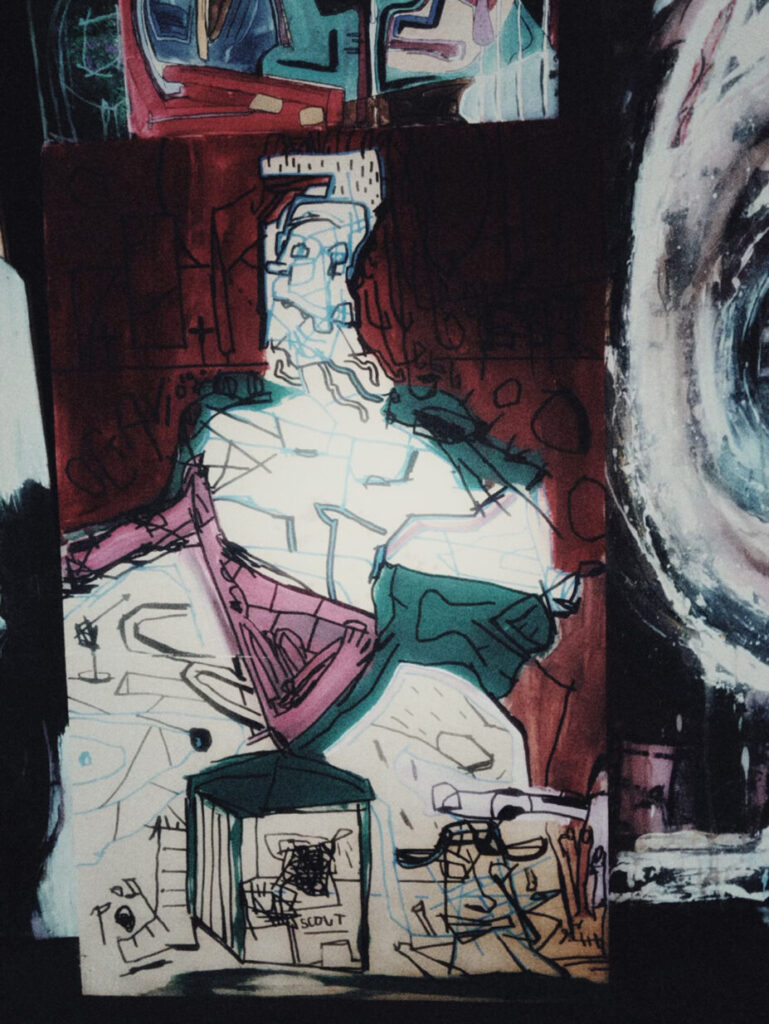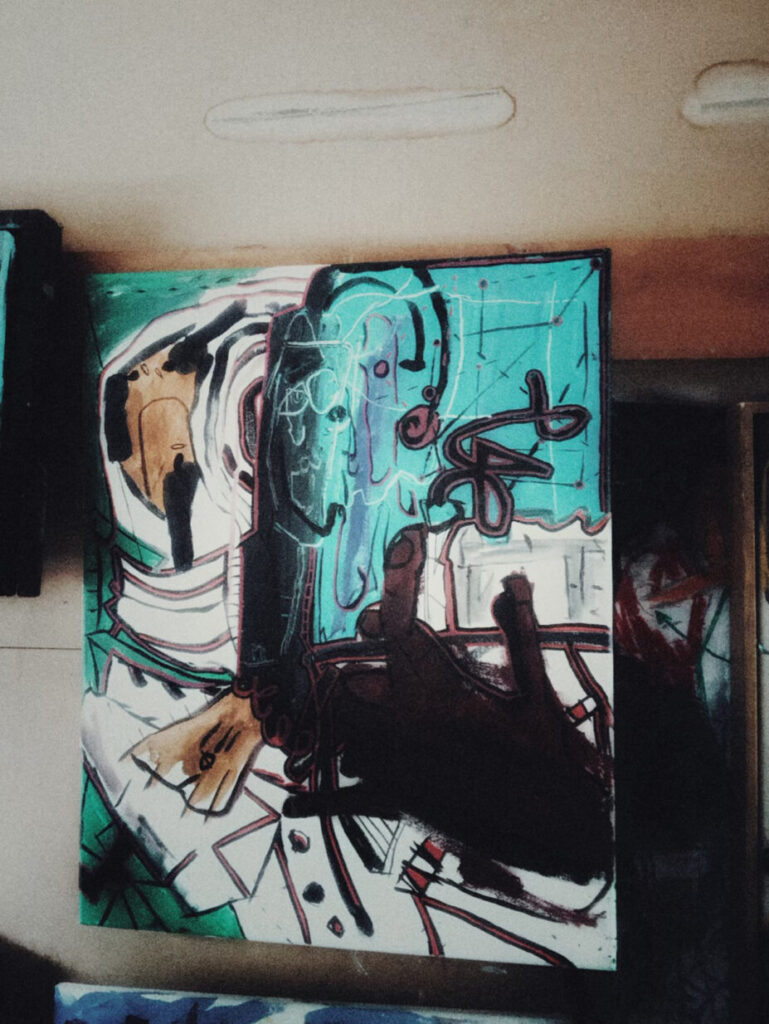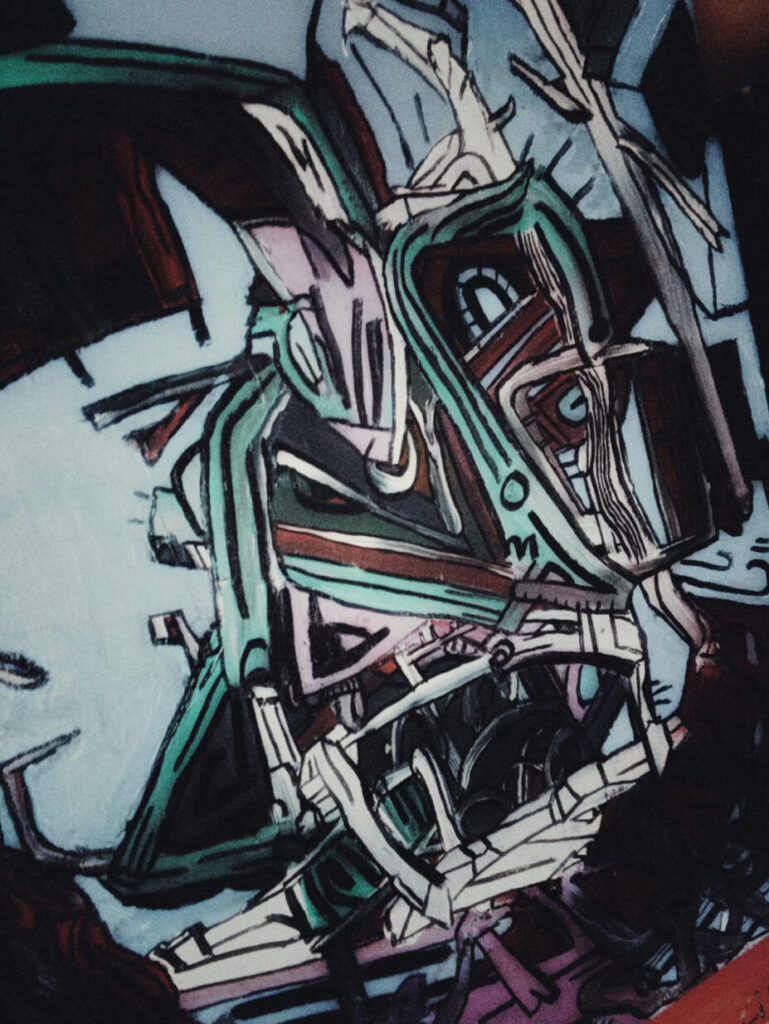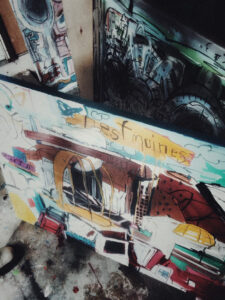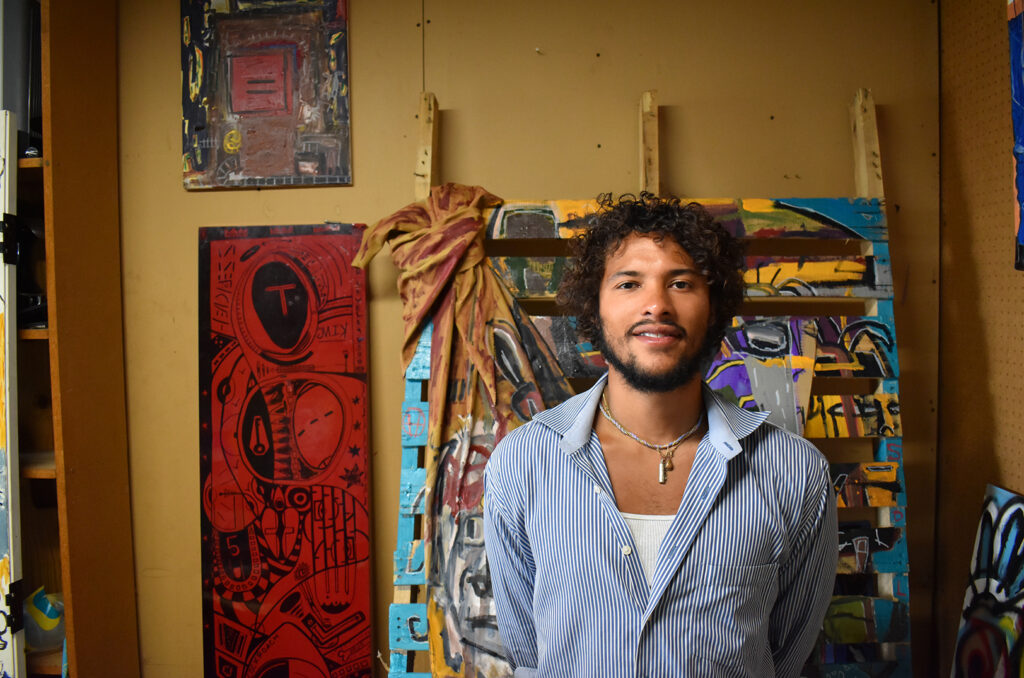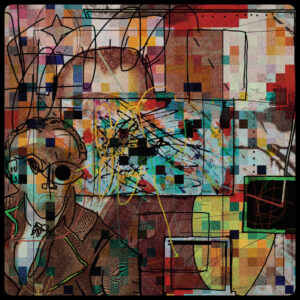Emerging Kansas City contemporary artist Addison “A.L.” Parrish believes that to create a work of art, he must first observe and understand the world around him.
“I feel like, as an artist, my main job isn’t necessarily painting,” Parrish said. “It’s seeing and being — not detached — but in a neutral state of observation.”
The 25-year-old from Des Moines said that his lifetime has provided ample opportunity to witness how people react to historic moments, which in turn fuel his creative fire.
“We live in a really interesting time,” Parrish said. “Honestly, since I was a kid it’s been a super interesting time in history . . . and I think there’s a lot of inspiration to be pulled from day-to-day interactions, how people react to those heavy, big events, and how those affect the small intricacies of personal interactions and day-to-day life.”
The process of taking in “the essence of life” and transforming it into artwork allows Parrish to gain deeper insight into himself, he said.
“It’s almost a mirror that I can pull my own understanding from,” Parrish said. “I don’t always have my thoughts organized, but once there’s something that takes a life of its own beyond me, it’s like a Rosetta Stone. The inner workings of the psyche in that physical, living thing … help decode and provide clarity.”
Parrish, who signs his paintings with the pen name “figwürm,” works with figurative motifs and representational imagery, he said, describing his style as a mix of neoexpressionist, abstract expressionist, cubist, and brutalist.
For now, Parrish primarily does commissioned pieces for individual collectors, though he said he’s begun to contact gallery owners to open his first solo exhibit.
He especially embraces brutalism, meaning he focuses more on the process and less on any certain subject or goal. In doing so, Parrish said he creates each piece of art all in one session, sometimes taking 24 hours or more.
“There’s not a blueprint that I’m following or a certain idea,” he said. “When I see something, I do it, and I run with it.”
That “impromptu energy” leads Parrish to a resolution with each piece, he said, noting that he feels most inspired by artists whose works also contain a message, such as Pablo Picasso, Jean-Michel Basquiat, and Francis Bacon.
“I still am super intentional, when the piece starts to resolve itself, about carving out a specific message,” he said. “To me, the best art always has a sneaky wink. There’s something that isn’t totally revealing, but you can feel that there is a message trying to be conveyed.”
Beauty depicted in a moment
Parrish has always been drawn to the beauty of nature, objects, and life, he said, but never “explored that appreciation” until the pandemic began.
As he finished his marketing and finance degree at Cal Poly amid COVID stay-at-home orders, Parrish began taking daily walks, often finding himself in awe of the biodiversity surrounding him.
“One day I was out on a walk and I was just like, ‘This is so beautiful; I’ve always liked art; Why don’t I just try something?’” Parrish recalled.
One drawing with a sharpie later, and Parrish realized that he had a natural affinity for art and creation, he shared.
As a child and teenager in Iowa, Parrish played sports, especially soccer, and rarely took the time to dabble in art or creative pursuits, he said.
However, his perspective changed from reading “Zen and the Art of Motorcycle Maintenance,” after which Parrish began to view any activity — even one as mundane as motorcycle maintenance — as an art form when done well, he said.
“I felt like at moments when I was playing soccer … the game would flow really well,” he said. “You’d get a combination of passes, things would open up, and that was artistic in a way.”
Growing up as a Black man in the Midwest also informed Parrish’s perspective and understanding of the world, which he said is reflected in his art, though not necessarily the primary subject of his work.
“A lot of people, I think, look to Black artists, or any marginalized artists, to depict things like that as being a big source and subject of their work,” he said. “Instead of hyperfixating on that as the subject of my work, it more informs the way that I came to understand and relate to the world myself, and I think that is reflected.”
His lived experiences led him to delve into philosophy and metaphysics as a way to explore ideas and solutions from a variety of perspectives, Parrish said.
“Growing up in that environment forced me to relate to myself and others in all these super conflicting and abstract ways,” he said. “Trying to figure out who you are when you have to be a different person in different spaces in order to broach acceptance … provides such an interesting foundation to build a worldview upon. I think that’s why my work is playful and exploratory at the same time.”
Finding wealth in the expression
Since moving to Kansas City in October 2021, Parrish has integrated himself into the local art community, saying he has felt very welcomed.
“Kansas City — not even necessarily just the art community, though that’s part of it — does a really good job of being open and providing opportunities,” Parrish said. “I feel like everyone I’ve talked to when I’ve done the work, gotten out there, and made those connections has been super welcoming and open.”
However, he still sees room for improvement within the KC art scene in terms of broadcasting opportunities more widely to ensure that underrepresented artists have equitable access to them.
“Especially in the art world, the merit needs to come from the product, not from marketing or putting yourself in this specific light,” Parrish said. “I think that’s antiquated.”
“I think there are opportunities for really groundbreaking stuff, and new ideas to be put to the forefront, if people are ready to take those risks instead of resigning themselves to this contrived picture of an artist,” he added.
Specifically, Parrish would like to see people look outside of the traditional institutions when searching for art, creativity, and inspiration, he said.
“There’s never been a bigger wealth gap ever in the history of man,” he said. “Those times are historically when the greatest art gets made, and that usually is being made in places that aren’t institutionalized. So, I think the institutions and people who are actually serious about promoting good art need to be looking in those places that aren’t coming from the very institutions themselves.”
As far as his own art, Parrish plans to explore cubism more deeply, he said, as well as playing around with morphing the cubist and neoexpressionist styles. He added that he also hopes to make art on larger surfaces and canvases.
At the core of it all, Parrish uses his art to deepen and broaden his perspectives of the world around him, he said.
“I’m just a loving guy,” he said, “trying to understand the world through art.”




